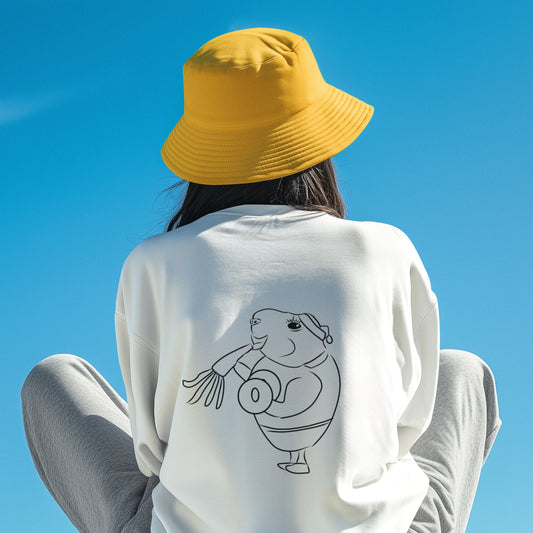
Fashion’s Hidden Waste: Unworn Clothes, Water Guzzling, and Sustainable Solutions
Share
The Tale of Unworn Garments
Once upon a time, in the bustling heart of the fashion industry, a secret lay hidden. It wasn’t whispered in the glossy pages of fashion magazines, in social feeds or showcased on the catwalks. No, this secret was buried deep within the seams of unworn clothes—the garments that never saw the light of day, destined for a life of obscurity.

Image of Sydney harbour bridge full of clothing
Picture this: a vast warehouse, its shelves sagging under the weight of forgotten dresses, abandoned jeans, and lonely T-shirts. These garments, lovingly crafted by skilled unpaid hands, languished in darkness. Their colours faded, their tags still intact, they waited for a chance to be loved, to dance in the sunlight. But alas, they remained unsold, their potential unrealised.
Did you know a huge 40% of clothes that's 60 billion garments remain unsold?
Did you know that according to the Ellen MacArthur Foundation, a shocking half of all fast fashion ends landfills or incinerators within just a year of production? Struggling to picture how much is in landfill? Well its enough to fill up the Sydney harbour bridge twice each year. according to the World Economic Forum. That's a lot of waste!

Person standing in a lake wearing jeans
Fashion and Waste Water
It's not just the final product that gets wasted think about all the things that go into making a garment. In Uzbekistan a whole lake (the fourth largest in the world) dried up due to cotton farming. How much water does it take to make a pair of jeans? Well its enough for a person to drink 8 cups of water for 10 years! Most cotton t shirts use enough water for a person to drink 8 cups for 3.5 years. Our organic cotton t shirts use 91% less water. That's still a lot of water if a product remains unsold!
Choose your fabric Wisely
Fabrics matter. Some are kinder to the planet than others. Natural fibres like organic cotton breathe life into our wardrobes without leaving a heavy ecological footprint. But then there are synthetics—the polyester, nylon, and acrylic—that guzzle resources during production and shed microfibres into our oceans when washed. As conscious consumers, we must choose wisely. Even natural fabrics like cotton (not organic) can have a dark side, often involving intensive pesticide use and unsustainable farming practices. Every garment we purchase, whether worn or not, carries the weight of its environmental impact.
Print on Demand and Direct-to-Garment Printing: A Sustainable Shift
Print on demand means no excess inventory, no waste. Imagine a world where every T-shirt is born only when someone eagerly awaits its arrival—a perfect fit for both the wearer and the planet.
Direct to Garment printing in our case uses less water and we also use inks that are non-hazardous, toxin-free, biodegradable, and contain no animal by-products. Do check the inks though as not all are as eco friendly as ours.
Buying less; Buying better
Remember, sustainability isn't just about buying less; it's about buying better. too. By choosing brands like Selas Cosmos that prioritise ethical production, sustainable materials, and timeless design, you can be part of the solution, not the problem. So, the next time you consider adding a new piece to your wardrobe, ask yourself: will it be a treasured companion or a silent contributor to the fashion waste crisis? The choice is yours, and your closet (and the planet) will thank you for it.
Check out our 100% Organic Cotton T Shirts Unisex, Sustainable Hoodies and Vegan Jumpers.














